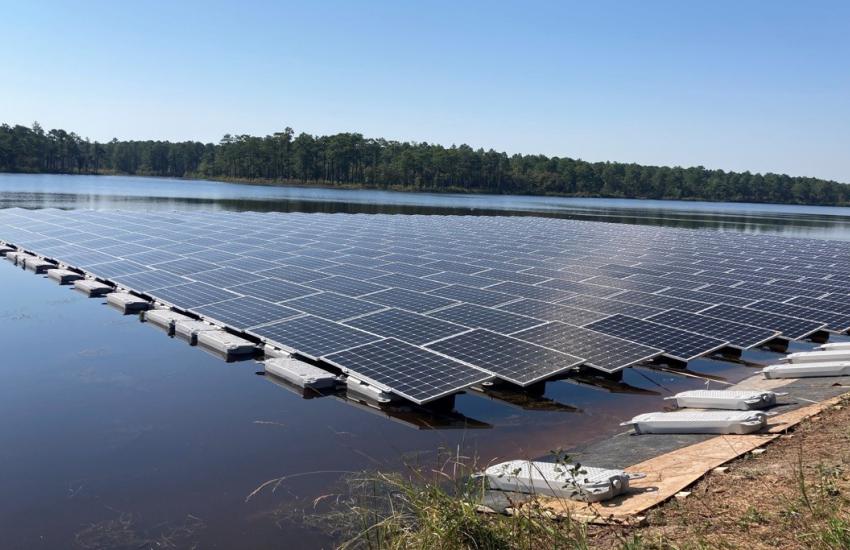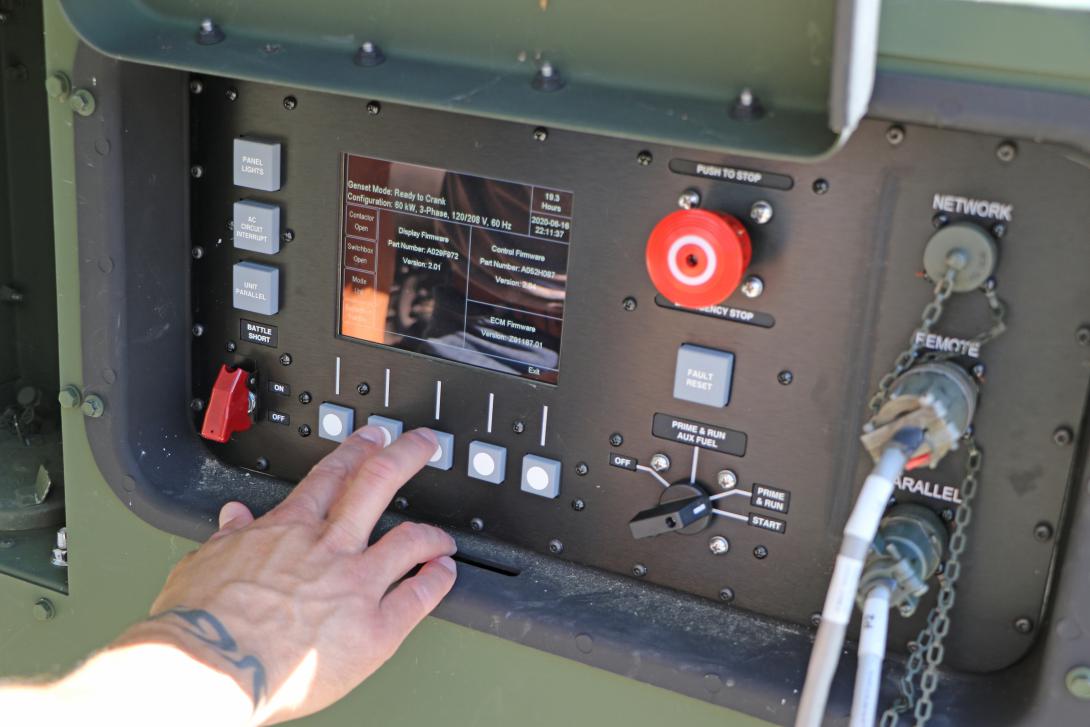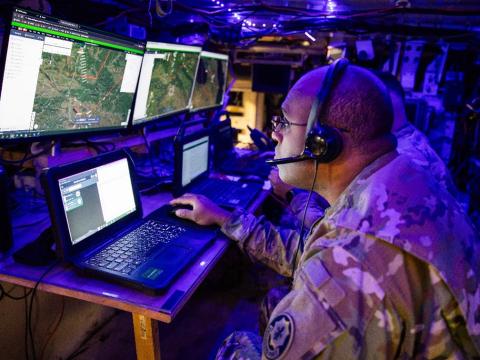Army Seeks Capability Enhancements Through Climate Change Efforts
The U.S. Army is viewing climate change as a national security threat as it retools for a smaller carbon footprint and more efficient force that can operate in dynamic environmental conditions. The service already has built microgrids at its bases, which constitute most of the conservation targets for its climate change activities. But it also is working to adapt them for mobile uses as well as platforms for reduced fuel consumption, and it already has begun prototype testing of hybrid tactical vehicles.
The Army issued its Climate Strategy in February 2022, followed shortly after by the strategy’s five-year Implementation Plan. The implementation plan is designed to be a living document that is updated as needed and revised every five years. But it does not try to get ahead of the technology it seeks to exploit. Instead, the Army strategy is to exploit technologies as they are introduced rather than move ahead of the technology curve.
In the year since the strategy was issued, the Army has ramped up its efforts to improve inflation resilience. A total of 28 microgrids are in operation, nine more are under construction and another 18 in design. Accompanying these microgrids are associated technologies and systems for battery storage. As part of this first year, the Army is awarding contracts for carbon-free electricity installation projects. Most of these are for solar energy, but the Army is increasing the amount it produces overall from renewable sources. Preliminary estimates for fiscal year 2022 state that the Army will have used almost 45% of its electricity from renewable sources.
Yet this drive to incorporate climate change technology approaches is not wholly based on environmental concerns. Rachel Jacobson, assistant secretary of the Army for installations, energy and the environment, is blunt about the driving issue of the service’s climate change efforts. “Our priority, notwithstanding any kind of climate change strategy, is to ensure that the Army maintains the ability to accomplish its mission and to fight and win our nation’s wars—and we’re never going to compromise that mission.
“We’re not addressing climate change in a way that compromises missions,” she continued. “In fact, we believe it will enhance readiness.”
Jacobson noted that the 45% figure for renewable sources of electricity includes 4.1% from on-site assets. More than 40% came from utility providers.
And facilities are the major concern for the Army. In the U.S. Department of Defense, installations account for 35% of the department’s carbon emissions. Jacobson allowed that the Army has more facilities than any other government organization, and that includes each of the other military services. So, the crux of the Army’s efforts focuses on bases and other facilities.
“The scope of our installation footprint is enormous,” Jacobson said. Many buildings are aging and need upgrades, so it makes sense to upgrade them with energy efficiency, she offered. “We have a lot of work to do to improve those facilities,” and that work will lead to reduced energy costs.
Over the past year, the service has made a big push for electric non-tactical vehicles. In FY 22, the service ordered nearly 1,200 such vehicles, and plans for FY 23 call for more than 2,000 electric vehicles. Even tactical vehicles are coming into play as the Army develops the technology for hybrid and all-electric vehicles. Two hybrid-electric Bradley Infantry Fighting Vehicles already are undergoing demonstration testing. Enhancements to existing tactical vehicles include retrofitting some with intelligent anti-idle capabilities to reduce fuel consumption by at least 20%.
The Army has more than 200,000 tactical wheeled vehicles, and they are expected to last 20 years, Jacobson allowed. The next generation of tactical vehicles must be fully operational in the field, and industry will play a role in designing them. “Twenty or 30 years from now, or sooner, vehicles are not going to have internal combustion engines anymore,” she predicted.
Jacobson noted that the Middle East wars illustrated how fuel supply lines were vulnerable to attack, leading to logistics problems and increases in casualties—which were higher in fuel delivery than in battle. Modernizing equipment to reduce reliance on fossil fuels will lessen the risk to soldiers, she pointed out.
By 2025, the Army hopes to have its next-generation family of light and medium tactical vehicles. The next steps will be hybrid-electric or all-electric vehicles, and Jacobson expects they will reduce fuel consumption by about 50%. The demonstrators for the Robotic Combat Vehicle-Light and the Robotic Combat Vehicle-Heavy all have hybrid-electric drivetrains. Other hybrid-electric demonstrators on contract include the Joint Light Tactical Vehicle and the High Mobility Multipurpose Wheeled Vehicle.
Jacobson offered that hybrid-electric vehicles bring tactical benefits: extended silent watch, silent mobility, reduced maintenance requirements and onboard electrical power that can be applied to a host of capabilities. In addition to some existing uses that otherwise might require a separate generator, future capabilities that could tap the vehicle’s electric power source include directed energy weapons and active protection systems. “You would have a self-contained energy system within the vehicle that wouldn’t have a heat marker,” she described.
Onboard vehicle power would offer the electrical capacity to maintain mission command on the move. This includes servers, workstations, radios and sensors, and it would shorten the time to emplace, operate and displace a command post. Jacobson suggested that it could lead to vehicle-to-vehicle microgrids, with each vehicle capable of exporting or importing power to or from grids. This would simplify power planning in all operations, and the Army is aiming to demonstrate these capabilities later this year, she added.
With environmental conditions becoming more dynamic, the Army must ensure that its equipment can be powered by means such as solar energy and battery storage. These systems must have longer life and lighter weight, she observed.
Ground-based platforms are not the only potential beneficiaries of increased fuel efficiency. The Army is addressing fuel consumption in its conventional aviation fleet and its unmanned aerial vehicles. A new, improved turbine engine should cut fuel consumption in UH-60 Blackhawk and AH-64 Apache helicopters by 13-25% when these fleets are retrofitted beginning in FY 24. Other benefits could include reduced maintenance (30%) and increased shaft horsepower (50%), which would enable the helicopter to fly higher in hotter temperatures at full payload for extended ranges. Environmentally, the new engine should reduce annual carbon dioxide emissions by 45,000 pounds per aircraft.

When it comes to introducing entirely new platforms, the Army is proceeding carefully rather than risking technology overreach. “We don’t want to engage in dramatic design changes,” Jacobson explained. “We want the design to match the pace of technology.” At the heart of this approach is working with industry to ensure that the Army’s needs are doable and will not be overly restrictive on design. The goal is to minimize design changes as much as possible yet allow changes that would make vehicles more capable and efficient.
She continued that the Army doesn’t need to lead the charge for renewable energy or alternative fuels. Industry has the point, and the Army will be a solid customer. “More and more, we’re going to be partnering with industry. Even if we’re generating on-site energy, it will be on-site energy that industry builds and maintains for us and delivers back to the grid,” she declared.
“We’re not going to get into the business of energy,” she elaborated. “We’re going to help drive innovative thinking about energy delivery and sources because of our needs.”
The biggest challenge facing the Army in pursuing its climate change strategy is the magnitude of its effort, Jacobson offered. Among the Department of Defense, the service has the most facilities and the most buildings. “We need a better handle for each one of those buildings on its current status for its energy efficiency, and we need to make sure we’re incorporating into renovation energy efficient systems in those buildings,” she said. “It’s a massive challenge—it’s not just expensive, it’s just going to take a long time.”
A sustainable materials pilot project at Joint Base Lewis-McChord in Washington aims to build a net-zero barracks that will use carbon-free building materials in a construct with high-energy efficiency. Using these materials for this self-sustaining building will reduce costs in the long run, Jacobson said.
Microgrids offer potential for powering bases, and the Army recently incorporated a floating solar array at Fort Bragg, North Carolina. Having it float on a lake reduces the area needed to produce the same amount of power, Jacobson offered. Built in partnership with Duke Energy and Ameresco, the 1.1-megawatt system would have taken up many more acres if built on land, she added.
Another challenge is more technological. Achieving the goal of majority electric non-tactical vehicles by 2027 will depend in large part on the capacity of the market to deliver these vehicles to the Army. Automakers already are experiencing supply chain issues for needed computer chips and minerals for batteries, and that will be a challenge for the Army as well.
If the goals of the Climate Strategy come to fruition, the Army will be a lean, efficient, more capable and more resilient force, Jacobson stated. Its vehicles will have better range and endurance, and its reliance on fossil fuels and its overall energy costs will lessen. “The Army will be a truly modern entity with highly technological capabilities that will increase our resilience and our strength,” she declared.






Comments